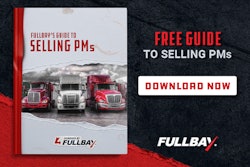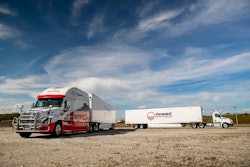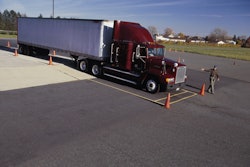I learned a new term recently, "corporate puffery.” Fred Lambert, editor-in-chief at Electrek, says that corporate puffery “refers to exaggerated or false praise. It’s also a legal defense used by defendants in cases of false advertising or misleading statements.” It turns out that company management, in certain situations, can legally exaggerate product performance claims with little consequence, all in the name of marketing hype.
I travel a lot attending industry events and have spent more than a few hours surfing television channels in hotel rooms. One show that always seems to draw my attention is Stacy Keach’s American Greed. Many of the episodes document the general public’s insatiable love affair with charlatans and fraudsters. Every story seems to start with someone offering us something for nothing, offering investing without risk, or proposing logic defying results.
We seem to fall prey to these get-rich-quick at no risk schemes like water falling off a duck. Smooth operators dressed in expensive suits and sporting expensive cars, offices, homes and the usual attributes of success seem to easily win us over.
Its not like we’re ignorant. We know there are many public examples of exaggerated product performance claims turning into legal fraud cases. We all seem to follow those with a somewhat morbid curiosity to see just who got fooled, whether or not the defendants are guilty or set free, and what legal maneuvering takes place in court and outside of court.
Yet, even armed with the vast knowledge base and crowd sourced information at our fingertips through our smart phones and the internet, we seem to fall prey to exaggeration on a regular basis.
Trucking has had a few of these instances. I know a few regulators who based their efforts on claims that certain technologies would be in production by certain extremely optimistic dates. I know customers who have put down money on technologies expecting the vehicles to be rolling immediately. I’ve seen technologies promised by innovators who employed the fake-it-until-you-make-it business model to secure massive amounts of venture capital.
Yet we get taken in regularly by the hype. Remember how natural gas trucks were going to take over the world in 2010? To be fair, they did get into building and operating a few thousands, but the market did not evolve as quickly as expected. The latest innovations in 15-liter natural gas engines combined with more aggressive environmental regulations may stimulate more growth, but it’s been 15 years or more since the original positive vibe on natural gas took off.
NACFE has researched a lot of technology adoption trends over time. Very few trucking technology innovations see instantaneous market adoption. The majority take years to carve out market share, and fewer yet get to reach the pinnacle of 90% or more market penetration.
I wrote in CCJ about one trucking technology some time ago that I had some first-hand knowledge of: the aerodynamic trailer tail tale. That product was actually a legitimate, notable improvement to fuel economy that had a significantly promising future but the market and regulations changed directions and it is now no longer in production. That was a market growth expectation failure.
Predictions about market growth fall under protected SEC safe harbor rules couched in qualifiers about forward-looking statements where “actual future results could differ materially from those projected.” It’s similar to weather experts getting a pass for being wrong predicting the path and severity of hurricanes.
Corporate puffery is now more than over-promising market share growth; it has evolved into over-promising product performance. It seems to me as if we are entering a new potential level of snake-oil salesmanship.
Can company management come out and say the next product will do everything we want it to, will cost next to nothing, and will last as long as we want? I expect trucking’s future will see an increasing number of these dubious claims, promising everything that we want and likely sprinkled with just enough factual information to entice investment.
Those legitimate innovations out there will have a lot of competition. I wonder which technologies we will miss or underrate as the overly optimistic hype drowns out legitimate company marketing.
How much of fleet, OEM management and engineering, and regulator time will be wasted by attributing too much credit to the hype?
The risk is that, inevitably, one of the seemingly outlandish claims turns out to be real and achievable. There in is the attraction for the venture capitalists. Cover enough bets on the VC craps table and, if you’re lucky, one of them will pay off big time. As for the others, they are “sunk costs,” absorbed and forgotten in time.
Wall Street investment programs rarely seem to invite venture capitalists and corporate heads to talk about all the failures they have pursued. They talk to the successes.
That may be why I like watching reruns of American Greed, because they talk about the failures of opportunists and the successes of the justice system. It’s rarely quick, and probably not frequently enough, but sometimes puffery evolves into fraud.
Getting swept up in the hype seems to be human nature. Believing people promising more than they will deliver is a well established trait. The famous P.T. Barnum quote “there’s a sucker born every minute” has a requisite corollary; “There is a fraudster born every few minutes” too.
My advice, do the homework, find trusted sources of unbiased information on the technologies you are considering before you invest. Test things before committing. After investing, hold companies accountable for their promises and marketing claims.
You won’t always get what you want, but your honest feedback is necessary to making the system improve.














